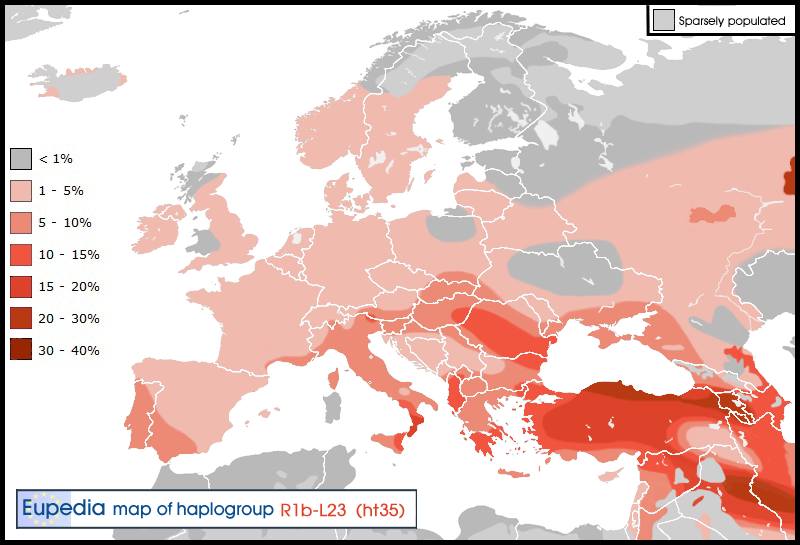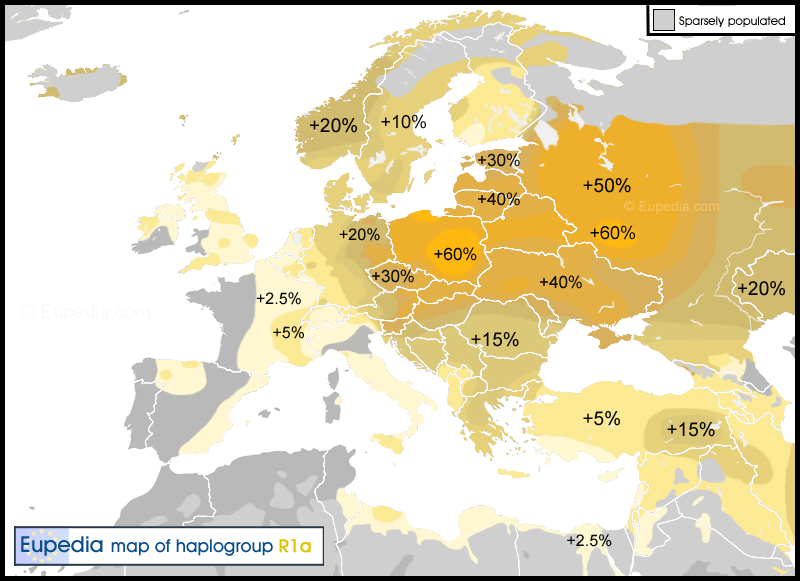Aberdeen
Regular Member
- Messages
- 1,835
- Reaction score
- 380
- Points
- 0
- Ethnic group
- Scottish, English and German
- Y-DNA haplogroup
- I1
- mtDNA haplogroup
- H4
Exactly. The original ANE was found in R individual (or was it R1?). We can safely assume that R1a and R1b folks were very heavy in ANE component. There is also a good chance that till expansion of farmers and pastoralists, and due to Ice Age before, these groups survived isolated and not mixed with others. Coming from the same source population they could have spoken mutually intelligible languages. Though I doubt that after 20 ky of separation it is possible to keep the language in pristine state, or close to it. However, if they were secluded, without different language substratum, perhaps in such conditions and in small groups language evolves very slow?
There is another scenario. Judging by dominance of R1b in Western Europe, it is clear about pandemic effect of R1b clades over farmers haplogroups. In this case farmers of Mykop, for example, could have come to remote contact with R1b hunter gatherer tribe and got "infected" with R1b haplogroup, which dominated others after some time. Mykop being in Caucasus and close to Yamna culture was already IE speaking with substantial level of ANE. Still lack of R1a in this mix is suspicious.
MA1 was an extinct type of R1, but given that it was about 24,000 years ago, I think it likely that he was closely related to whoever became the ancestor of R1a and R1b. However, I wouldn't like to make any assumptions about what subclade or haplogroup, if any, should be considered to tie in with the IE language. Given that it was apparently a fairly formal and structured language and not the kind of hybrid that one might expect to find on the steppes, the IE language may have originated with Maykop, which may or may not connect it to some J2, G or R1b group or some mixture thereof. Whereas I always thought that the Russian hunter gatherers or whoever it was that mixed with Maykop or some such Caucasian group on the steppes was probably some fairly straightforward mixture of ANE and WHG. Although for some reason the latest tease about the upcoming results only talked about the ANE aspect of Russian hunter gatherers.
I'm expecting to find out eventually that R1b has a complex farmer related history in the Caucasus and Anatolia, one that could involve some non-IE R1b entering Europe from the Adriatic and the Mediterranean during the late Neolithic, although other R1b types could be involved with IE via the Caucasus or the Ukraine. Of course, I could be totally wrong about that. But I'd like to read an explanation of the geographic distribution of R1b subclades in Europe that discusses the age of each subclade.




